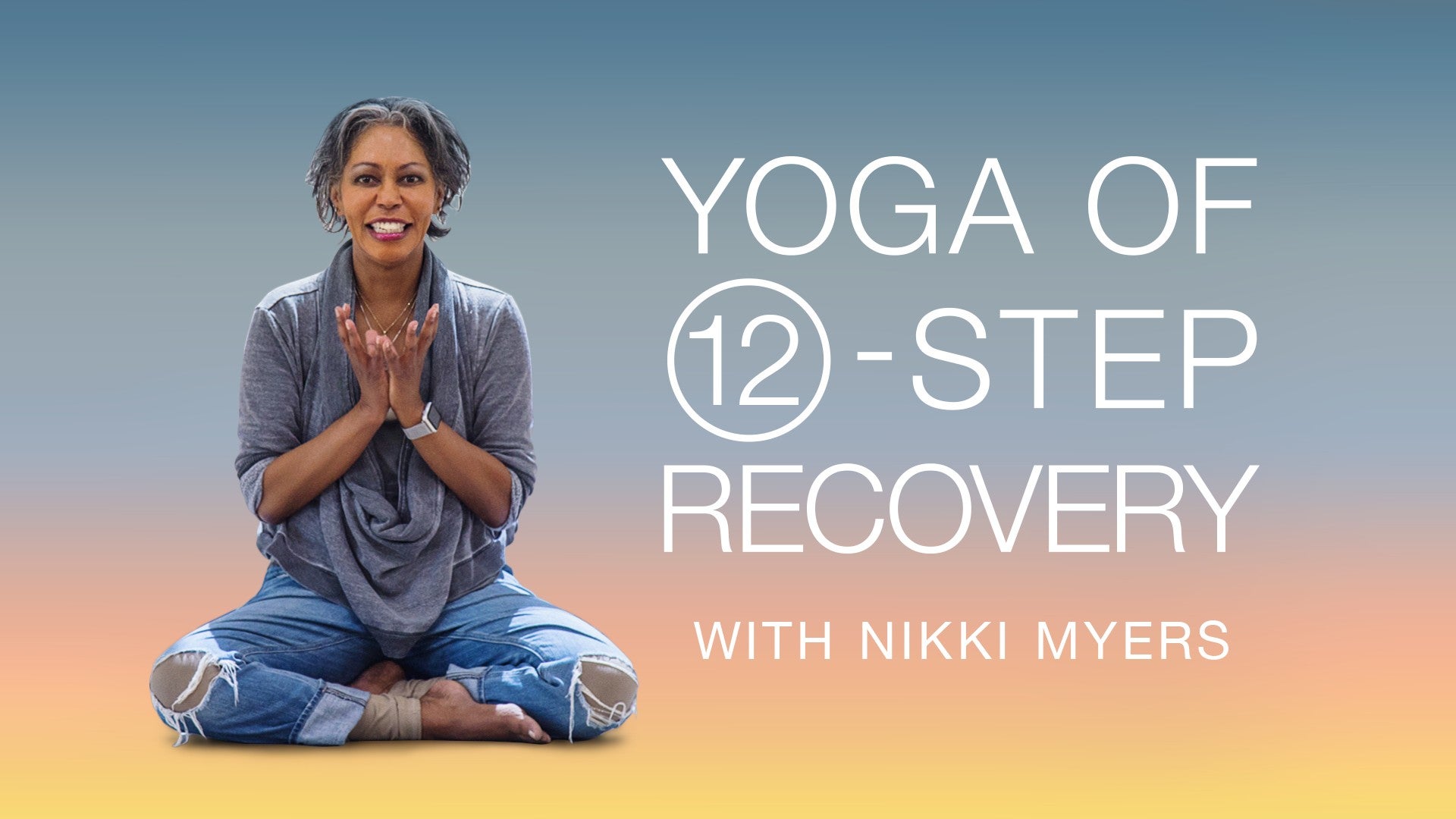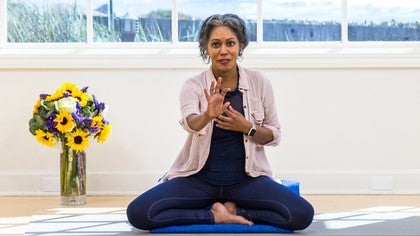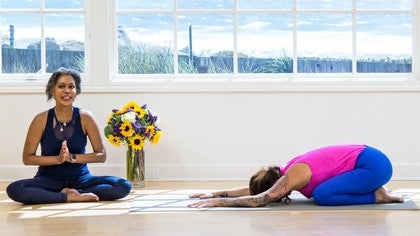Description
About This Video
Transcript
Read Full Transcript
Hello, and thank you for being with us. We are just going to do a little brief. Many intervention is what we call them. These are little tools that we can use in times where we feel a sense of maybe upset or aggravation or just dysregulation, if you will, to bring us back to center. And so Callie Snyder is here with us, and she's going to help us demonstrate this intervention which we call the pause button, the pause button.
So I'm going to ask Callie to come to all fours, take a big deep inhale, and then exhale around the spine, let your chest go to your thighs and your hips back to the heels. Good, and find child's pose. So this intervention again, we call the pause button, and we're going to demo this in child's pose. Now it doesn't necessarily have to be child's pose in order to do this. It just needs to be some position that allows you to rest and relax.
So this one's not necessarily comfortable for everyone. If that's you, we can always find another posture. You might turn over on your back, bring your knees in towards your chest, if necessary, you might even sit up remembering that is not about the posture itself. It's about the function that that posture serves. And the invitation of this intervention is to pause, we call this the pause button.
And the whole idea is that this is much like step two in the 12 step program, the invitation to find restoration, right? So step two in the 12 step program says that we allow ourselves to be restored to sanity, restored to sanity. I don't know about you, but I can get insane in a heartbeat. You know, one minute, everything's fine. And then all of a sudden something doesn't go my way.
And I'm off the chart in insanity. When I recognize that the invitation is to pause, to come back to center, to come back to center. Now here's the deal. The ancients gave us a way to know. They gave us a way to know.
They said, all we need do is listen into our breath. When we listen to into our breath, that gives us a key to the state of our nervous system in that moment. They say that anytime the breath becomes too jerky, jumpy, fragmented, erratic, irregular, anything other than that long, slow and deep, that it's a side that the nervous system is just a little bit dysregulated, just a maybe a little bit off track. So we can pause and notice that the whole idea about the pause is creating the space. When we create the space, we can leave room for a choice.
Otherwise we'll just go down the path of least resistance, go down the same old, doing the same thing, expecting a different result. And that doesn't work. That doesn't work. So when our breath noted by keying in on our breath and noticing, we can pause and make a different decision. So the whole idea again, once again, here is listening into the breath to allow us to just pause because when we do too much, we risk injury.
When we do too little, we risk atrophy. We're looking for that place right in the middle where there is a homeostasis, there is a pause, which again gives us an opportunity to do something different, to do something in a different way, to take a new neural pathway, actually one that serves what we say is most important to us versus one that no longer serves what we say is important to us. So the invitation, any time in your life, when you notice that, just pausing to notice the breath, the invitation is to just take another big deep breath in. It's like a whole reset to your nervous system. Use this, just key on into it any time.
So Kelly, will you come on back up? Come over and have a seat. Thank you all so much. We hope that you'll be able to use this just again to bring us back to center. Thank you.
Yoga of 12-Step Recovery
Comments
You need to be a subscriber to post a comment.
Please Log In or Create an Account to start your free trial.














